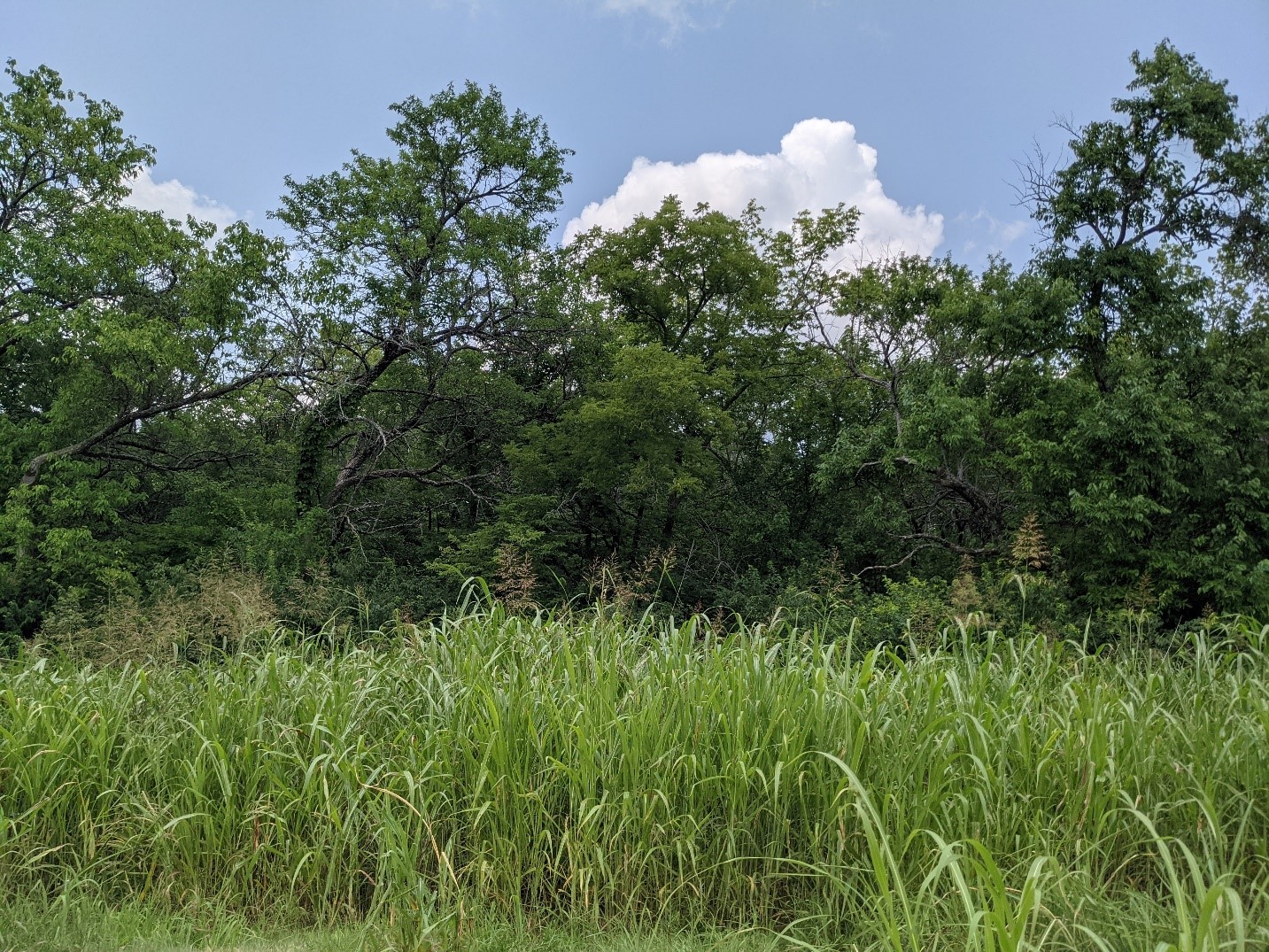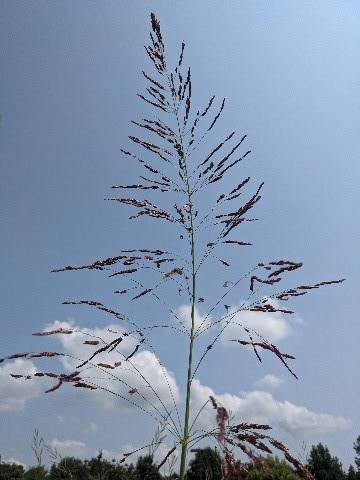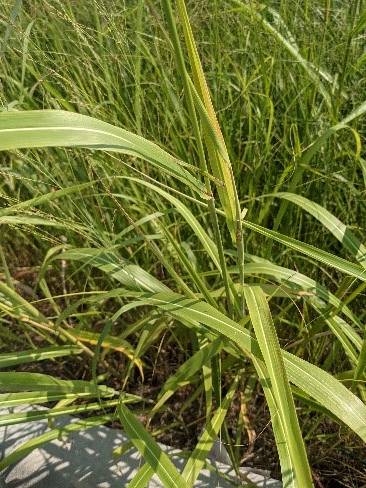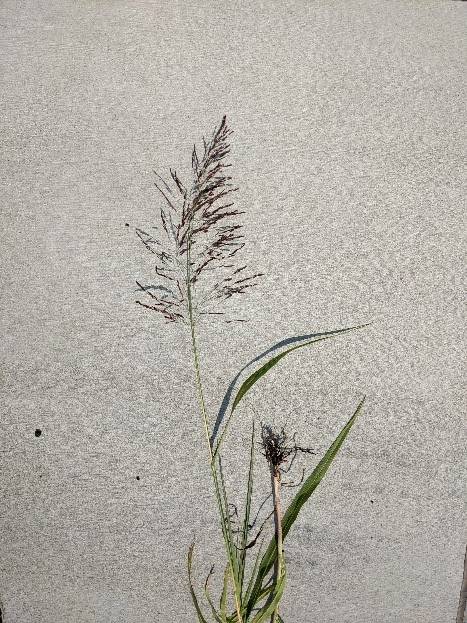Noxious Weeds: Johnsongrass
Return to Crops and Livestock Agent Articles

Across the county, the reddish-brown, open panicle seed heads of Johnsongrass can be seen blowing in the wind. Designated as a noxious weed, these plants can be detrimental to native plant diversity and row crops. Summer months are the prime time to manage Johnsongrass, through mowing, applying herbicides, or a combination of both.
Johnsongrass spreads through seeds and rhizomes, so preventing seeds from forming is only one half of the noxious weed battle. Frequent mowing or cultivation depletes the carbohydrate reserves in the plant and can be combined with chemical treatment. For landowners, pastures can be mowed to prevent seeding and spot treated where stands are smaller with products such as glyphosate or imazapic. For farmers, glyphosate can be sprayed where using corn and soybean varieties that are glyphosate-resistant or choose an appropriate Group 1 herbicide for soybeans. Additional herbicides, rates, and limitations are listed under the noxious weed section of the K-State Research and Extension Chemical Weed Control. Always read herbicide labels to understand and assume the risks and appropriate uses associated with the product.The Johnson County Noxious Weed Department has identification tips and management recommendations on their website to aid residents in Johnsongrass control. Additional information on Johnsongrass can be found from the K-State Agronomy eUpdate World of Weeds.



Resources:
World of Weeds – Johnsongrass:
https://eupdate.agronomy.ksu.edu/article_new/world-of-weeds-johnsongrass-452-3
Johnson County Public Works Noxious Weed Management:
https://www.jocogov.org/dept/public-works/noxious-weed/noxious-weed-management
K-State Extension Noxious Weeds:
